Why Your AC System is Short Cycling and How to Fix It
If you’ve noticed your air conditioner turning on and off every few minutes, it’s not your imagination—and it’s definitely not normal.
This behavior is known as short cycling, and it’s one of the most common indicators that something’s not quite right with your HVAC system. Left unchecked, short cycling can lead to increased energy bills, uneven cooling, unnecessary wear and tear on your home’s system, and even complete system failure.
Understanding why your AC system is short cycling—and how to fix it—is essential for protecting both your comfort and your budget. Our team at Carrier Cooling Center breaks down what causes this issue and what you can do to get your system running smoothly again.
What Is Short Cycling?
Short cycling refers to the situation where your AC system turns on, runs for a very short time (usually just a few minutes), then shuts off—only to start up again shortly afterward. Instead of going through regular cooling cycles that last 10 to 15 minutes or longer, the system constantly stops and starts in a loop.
This not only prevents your home from reaching a consistent temperature, but it also puts a significant strain on the compressor—the heart of your AC system. The compressor is designed to start occasionally and run steadily, not to kick on every few minutes. Over time, this constant on-off cycle can reduce the lifespan of your equipment and lead to costly repairs.
Common Causes of Short Cycling
There are several reasons why your AC system might be short cycling. Some are relatively minor and easy to fix, while others may require professional diagnosis and repair.
1. Oversized AC Unit
One of the most common reasons for short cycling is having an AC system that’s too powerful for your space. When a unit is oversized, it cools the air too quickly and shuts off before completing a full cooling cycle. The temperature rises again just as fast, causing the system to turn back on repeatedly.
While this might sound like a good problem to have, it actually leads to poor humidity control, uneven temperatures, and faster system wear. Unfortunately, fixing an oversized unit often means replacing it with a properly sized system—a job best left to an HVAC professional who can perform a load calculation for your home.
2. Dirty or Clogged Air Filter
Sometimes, the fix is as simple as changing your air filter. A clogged filter restricts airflow, causing the system to overheat and shut down prematurely to protect itself. Once it cools down, it starts up again—only to shut off again when the airflow is still restricted. If your AC is short cycling and you haven’t changed the filter in a while, this is the first place to look.
3. Low Refrigerant Levels
Your air conditioner needs the right amount of refrigerant to absorb heat and cool your home. If there’s a leak or the refrigerant level is too low, the system may struggle to complete a cooling cycle. Low refrigerant can cause the evaporator coil to freeze and disrupt the normal function of the compressor, resulting in short cycling. If you suspect a refrigerant issue, call a professional right away—handling refrigerants requires special tools and EPA certification.
4. Thermostat Issues
The thermostat is your system’s command center, and if it’s malfunctioning, miscalibrated, or poorly placed, it can send the wrong signals to your AC unit. For example, if the thermostat is located near a vent, window, or heat-producing appliance, it may read temperatures inaccurately and shut the system off too soon. Try moving the thermostat (or shielding it from direct airflow or sunlight), checking the batteries, or upgrading to a newer smart thermostat if yours is outdated.
5. Electrical or Control Board Problems
Faulty wiring, corroded connections, or a malfunctioning control board can also cause your AC to turn on and off erratically. These problems are typically more complex and can be dangerous to diagnose without the right training. If you’ve ruled out the more straightforward causes, it’s time to call an HVAC technician to inspect your system’s electrical components.
6. Frozen Evaporator Coils
Frozen coils can interfere with the heat exchange process, triggering the system to shut off prematurely. This can be caused by low refrigerant, poor airflow (again, check that filter), or a dirty coil. If you notice ice forming on the indoor unit or refrigerant lines, turn off the system and allow it to thaw completely before restarting. If the problem returns, call a pro like those in the Carrier Cooling Center network to inspect and repair the cause.
Why It’s Important to Fix Short Cycling Quickly
Short cycling is more than just annoying—it can significantly impact your comfort and wallet. The frequent start-stop operation uses more electricity than normal cycles, causing your energy bills to spike. It also places unnecessary stress on key components, especially the compressor, which is expensive to replace. Over time, a short-cycling AC system is more likely to break down entirely, leaving you without cooling during the hottest part of the year.
How to Fix and Prevent Short Cycling
Start by checking the easy fixes: change your air filter, inspect the thermostat, and look for signs of ice or restricted airflow. If none of these resolve the issue, or if the short cycling persists, call a licensed HVAC technician. A professional will be able to diagnose the underlying cause, whether it’s electrical, mechanical, or related to the size of the unit.
Preventing short cycling in the first place starts with proper installation and regular maintenance. Make sure your AC system is correctly sized for your home, and schedule seasonal tune-ups to keep it running at peak performance. During these checkups, a technician can catch early warning signs—like low refrigerant or dirty coils—before they turn into bigger problems.
Don’t Ignore the Signs
Short cycling might seem like a minor inconvenience, but it’s a red flag that your AC system isn’t operating as it should. Ignoring the issue can lead to higher energy bills, reduced comfort, and premature system failure. By understanding what causes short cycling and how to fix it, you can protect your investment and enjoy cool, consistent comfort all summer long.
If your AC is short cycling and you’re not sure where to start, use Carrier Cooling Center’s Find a Dealer link to locate a reliable HVAC technician near you to perform a tune-up. A quick inspection today could save you a lot of hassle—and money—tomorrow.


 Financing
Financing